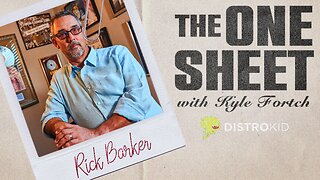Premium Only Content

Difficult life in forest
You are reading The Science of Fire in Ways of Catching a Spark: A History of Fire-Making Methods
Show storyContents
INTRODUCTION
The light of a burning torch leading the way through the dark, a hearty meal stewing on a hearth, stories told around glowing embers and flying sparks – fire is one of the bases of human life. Used by almost every human on Earth, it has throughout time provided a source of warmth, the means to cook food, protection from predators, a way of making new tools and weapons, played a role in various religions, rituals, and ceremonies, and been a crucial component of energy production. Without fire, human evolution would not have been possible in the way we know it.
The first evidence of fire being used in a controlled way dates back at least one million years and is linked to our distant Homo Erectus ancestors in Africa. It is assumed that they were inspired by naturally occurring flames from forest fires and lightning strikes. Realising that the heat they produced could be utilised, they began to look for ways to start their own.
The Science Museum Group houses one of the world’s largest collections of fire-making tools, which illustrates a great variety of techniques and ingenuity. Most objects used to be part of a private museum within the Bryant and May match-making factory’s offices and were acquired by the ornithologist and fire-making enthusiast Edward Bidwell. Bidwell collected between the late 19th- and early 20th century - the height of Britain's colonial power. Tracing the legitimacy of purchases or provenance is therefore difficult and part of a long and problematic tradition of colonial exploitation.
FIRE-MAKING PHOTOGRAPH
Photograph of two Maori people making fire with a fire-plough, the woman holding the hearth, the man using the plough, Aotearoa (New Zealand)
Science Museum Group
More informationabout Photograph of two Maori people making fire with a fire-plough, the woman holding the hearth, the man using the plough, Aotearoa (New Zealand)
THE SCIENCE OF FIRE
Fire is created by increasing the temperature of tinder, which combusts, creates an ember, and then heats up other material, called kindling, until it starts to burn as a flame. Tinder is a fine material with the ability to combust quickly. How quickly, depends on its autoignition temperature, meaning the lowest temperature something needs to combust only through heat rather than an external source like a spark or a flame. This is influenced by how moist or dense a material is. Depending on region and the fire-making tool that is used, easily combustible tinder includes natural materials like amadou made from fungus, wood or bark shavings, dried leaves, grass, pine needles, and other plant fibres, as well as artificial materials like paper strips, steel wool, char cloth, or petroleum.
Humans have throughout history used different fire-making techniques and tools. These generally fall into one off the following categories: percussion, friction, compression of air, chemical, solar, and electrical. When exactly each method originated is unclear - most have ancient roots and have simultaneously been used all over the world in different regions, cultures, and times. While some of them lost common popularity with the invention of the friction match, they have not disappeared and are often still used in the same or similar ways.
SCIENCE OF FIRE IMAGES
Two sheets of amadou or 'German tinder', made from the fomes fomentarius fungus, which is also known as tinder fungus
Science Museum Group
Touchwood tinder, here shown with other types of tinder, including cedar wood, charred silk tinder, and charred rag tinder.
Science Museum Group
Metal tinder box with engraved stork
Science Museum Group
Metal tinder box with human figures
Science Museum Group
PERCUSSION
One of the oldest and most widespread methods of fire-making is by using tinder, flint, and steel. Even ‘Ötzi’, the natural mummy of a man who lived 5300 years ago in the Ötztal Alps in Austria, was found with flint, iron pyrites, and a collection of different plants for tinder.
Striking a sharp-edged flint or hard stone, such as quartzite, chert, or chalcedony, against a fire striker of mineral or fire-steel, causes hot, oxidising metal particles to split off the fire striker and ignite tinder.
Fire-steels were invented with the ability to forge iron in the Iron Age. Found all over the world, they come in different shapes and forms, ranging from simple to elaborate designs. All have one feature in common – they are curved and shaped to fit the human hand. This also applies to the large variety of different boxes, bags, and pouches that are used to store the kits and keep the tinder dry. While some are designed as pocket versions to start fires on the go, others are made for domestic use to light hearths, fireplaces, and candles in the home.
An example of a pocket kit is this box from the West Indies, made from the shells of two half-gourds and containing tinder of the flower stem of an Agave plant. Another is this ‘mechag’ pouch from Tibet. The leather pouches, beautifully decorated and featuring a striking plate, are mostly known under their colonial British term ‘chuckmuck’, worn on a belt, and found across North Asia, China, and Japan from the 17th century onwards. This intricately carved object from Norway on the other hand is a domestic tinder box. It is designed to be hung on the wall of a hearth and was a common feature of households until the mid-19th century. While most of them were made of wood or tin, wealthier homes tended to own boxes made of brass or silver.
A more expensive alternative to the tinderbox, which was mostly found in European upper- and middle-class homes, is the tinder pistol. It has a flintlock mechanism, which was commonly used in rifles and pistols, and works by pulling a trigger that strikes a steel frizzen and creates a spark igniting tinder. There are even very convenient models that combine one with an alarm clock . When the alarm goes off, the trigger is released and a candle is lit!
The most popular fire-making tools today are lighters. Lighters consist of a canister filled with a flammable liquid or compressed gas acting as tinder, as well as a mechanism to light it. In 1903, this mode of ignition was revolutionised when the Austrian scientist Carl Auer von Welsbach discovered ferrocerium – an alloy creating a huge spark when being scratched. Based on this, several companies began to develop different types of lighters, ranging from Ronson’s ‘Pist-O-Liter’ to wind-proof Zippo’s and contemporary disposable models. While at first using the hydrocarbon mixture Naphtha as fuel, most lighters produced from the 1950s onwards run on the more controllable and odourless butane.
-
 52:36
52:36
The Dan Bongino Show
4 hours agoCutesy Time Is Over (Ep. 2429) - 02/24/2025
1.34M6.14K -
 1:10:46
1:10:46
The Rubin Report
3 hours agoLEAKED: Tense Meeting Details Leaked as MSNBC Lays Off Major Hosts
32K86 -
 1:03:25
1:03:25
Timcast
3 hours agoDAN BONGINO Named Deputy FBI Director Under Kash Patel, Deep State & Dem IN PANIC | Timcast LIVE
233K80 -
 2:31:41
2:31:41
Steven Crowder
5 hours ago🔴 Trump Drops a Bombshell: Bongino’s FBI Takeover & Crowder in Germany Exclusive
665K245 -
 1:59:34
1:59:34
LFA TV
23 hours agoTIME FOR PAYBACK! | LIVE FROM AMERICA 2.24.25 11AM
83.2K10 -
![🔴[LIVE TRADING] Bounce or Bust?! || The MK Show](https://1a-1791.com/video/fwe2/ad/s8/1/c/n/q/f/cnqfy.0kob-small-The-MK-Show-Feb.-24th.jpg) DVR
DVR
Matt Kohrs
16 hours ago🔴[LIVE TRADING] Bounce or Bust?! || The MK Show
55K2 -
 1:03:25
1:03:25
Kyle Fortch
4 hours ago $1.70 earnedRick Barker: Managing & Developing Taylor Swift, Breaking Artists Today & MORE | THE ONE SHEET S1E5
98.6K1 -
 37:11
37:11
BonginoReport
7 hours agoDan Bongino is Leaving (Ep.146) - 02/24/2025
225K466 -
 2:59:20
2:59:20
Wendy Bell Radio
8 hours agoThe MAGA Diet
165K58 -
 1:22:03
1:22:03
Graham Allen
5 hours agoGRAHAM MAKES YUGE ANNOUNCEMENT!! + LIBERAL REP ROOTING AGAINST AMERICA?!
111K104